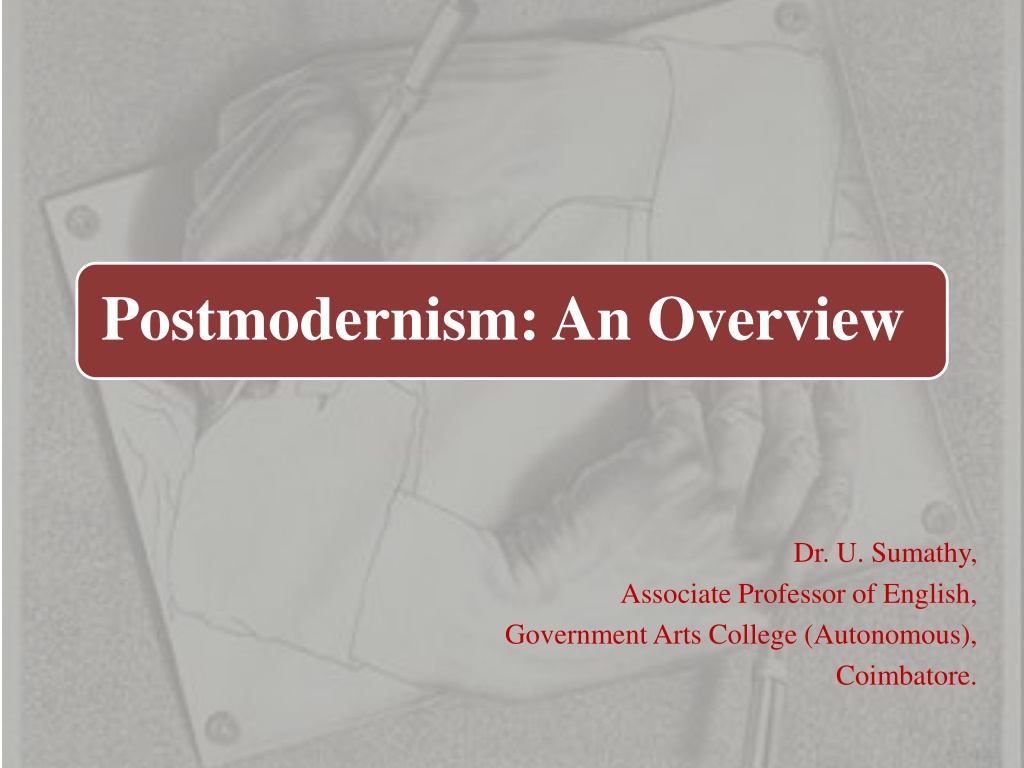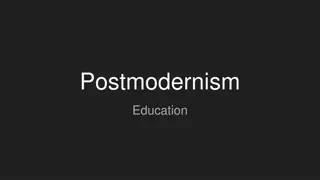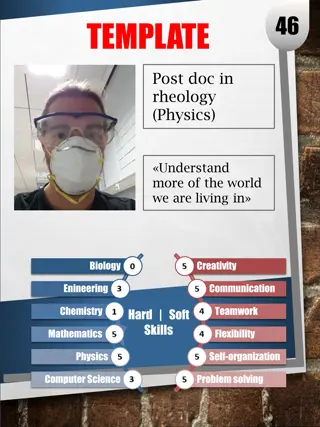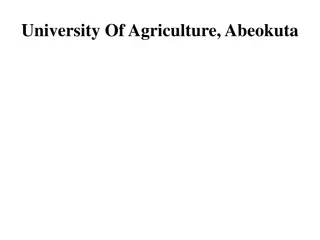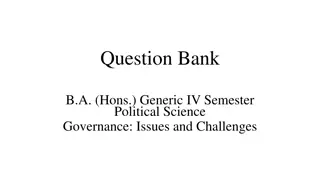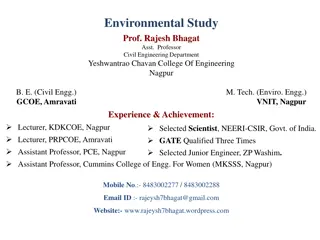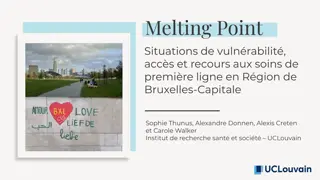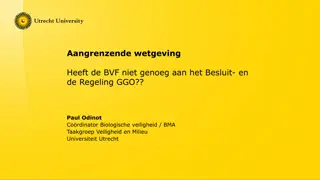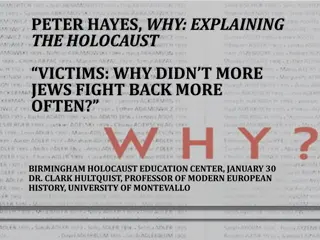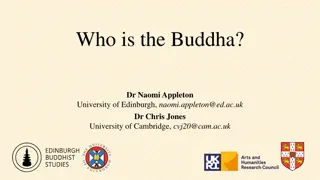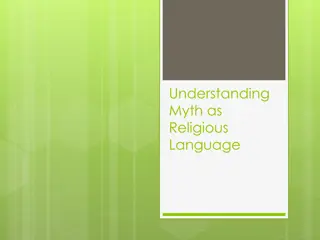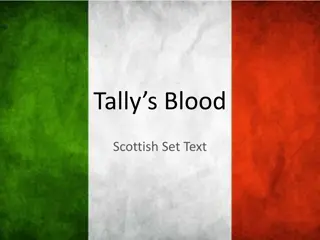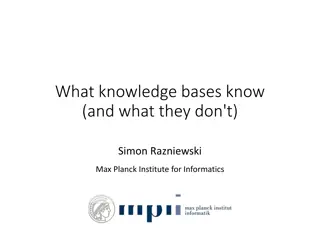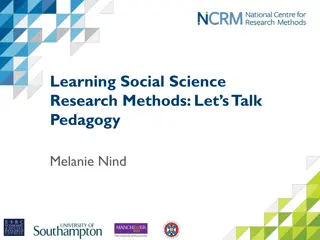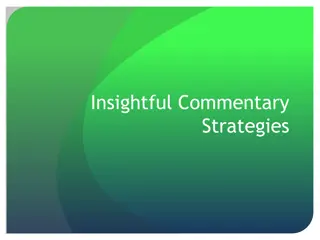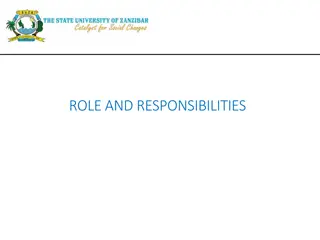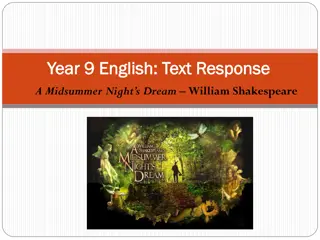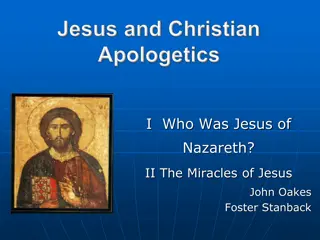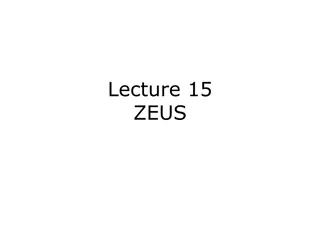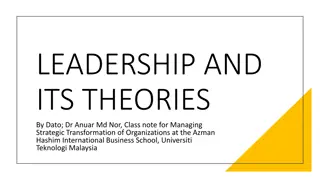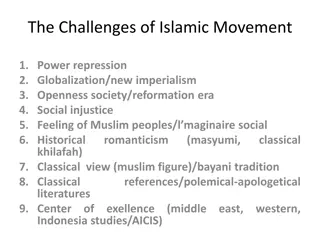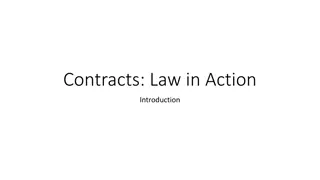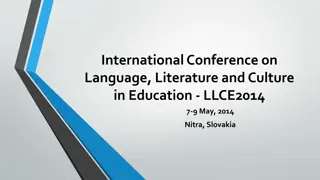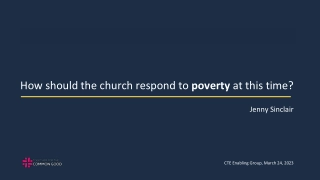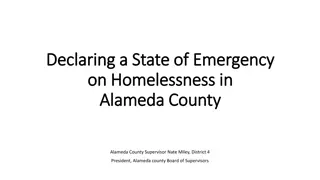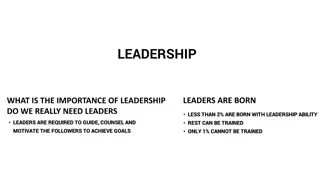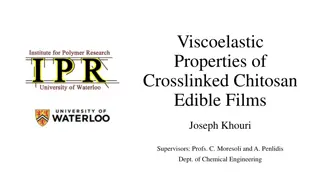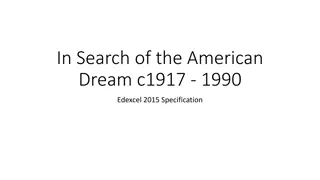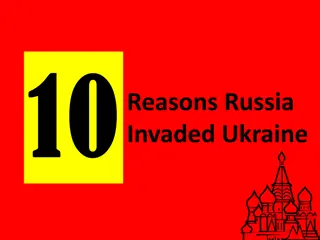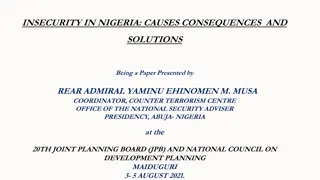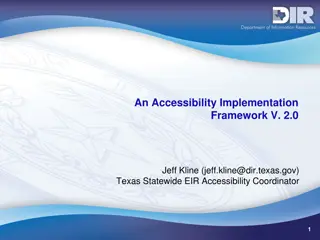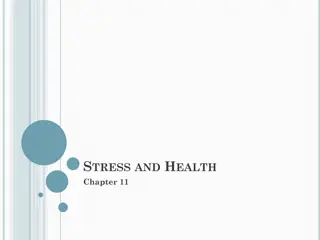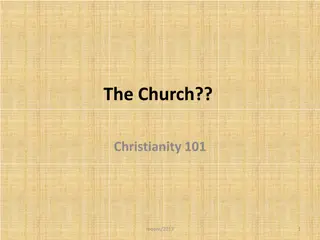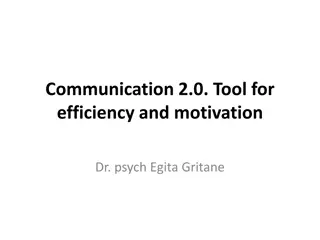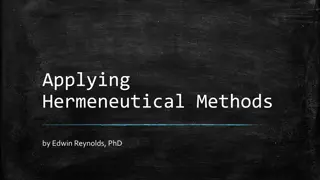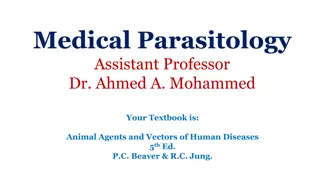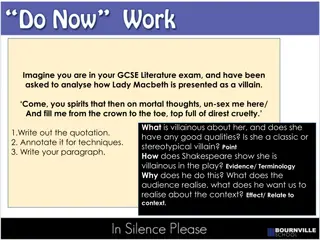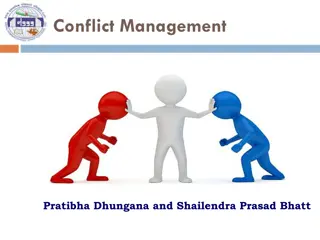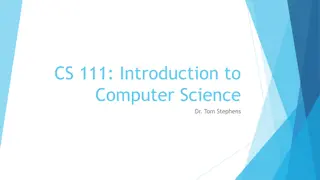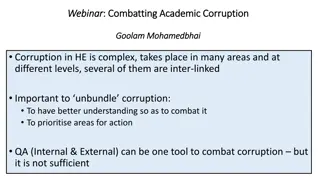Exploring the Postmodernist World: A Multifaceted Overview
Delve into the diverse realms of postmodernism through this comprehensive overview, covering concepts like consumerism, commodification, cybernetics, eclecticism, mass media, hyperreality, internet culture, and evolving beliefs. Witness the reflections of this movement in architecture, art, music, cinema, and literature.
Download Presentation

Please find below an Image/Link to download the presentation.
The content on the website is provided AS IS for your information and personal use only. It may not be sold, licensed, or shared on other websites without obtaining consent from the author. Download presentation by click this link. If you encounter any issues during the download, it is possible that the publisher has removed the file from their server.
E N D
Presentation Transcript
Postmodernism: An Overview Dr. U. Sumathy, Associate Professor of English, Government Arts College (Autonomous), Coimbatore.
The Postmodernist World Consumerism: The things you own end up owning you .
The Postmodernist World Commodification Lorne Daniel, I wonder if, one of these days when I someone is going to try to sell me sunshine. wake up,
The Postmodernist World Cybernetics: The way people control and communicate information
The Postmodernist World Eclecticism: You listen to reggae, watch a western, eat Mc Donald s at midday, local cuisine at night, wear Paris perfume in Tokyo, dress retro in Hong Kong. Together artist, gallery owner, critic and public indulge one another in the Anything Goes it s time to relax .
The Postmodernist World Mass Media: The news which sells more is the truth now.
The Postmodernist World Hyperreality:
The Postmodernist World Internet Surfers: Staying in touch
The Postmodernist World Everything changes including time, belief and values.
A Movement in . . . Architecture
A Movement in . . . Music
A Movement in . . . Cinema
A Movement in . . . Literature
Definition Cuddon, Postmodernism is characterised by an eclectic approach, by a liking for aleatory writing and for parody and pastiche Eclectic use of fragmented forms Aleatory that incorporates randomness or chance Pastiche that imitates the style or work of an artist
Definition Postmodern literature is marked both stylistically and ideologically, by a reliance on such literary conventions as fragmentation, paradox, unreliable narrators, often unrealistic and downright impossible plots, games, parody, paranoia, dark humour and authorial self- reference
Theorists: Jean Francois Lyotard Incredulity towards metanarratives. Metanarrative that deals with progress and human perfectability. Try to reassure and explain. Believe in reason and logic. Mininarrative provisional, temporary, contingent and relative. Appreciation for diversity, local differences and plurality.
Theorists: Jean Baudrillard The obliteration of the real by signs caused by images from TV, cinema, ads. Sign not an index of underlying reality but merely of other signs: Simulacrum More attached to images than the real. Real replaced by false Cartographers drawing a map of a ruined place: Hyperreality Leads to more simulations
Theorists: Deleuze and Guattari Rhizome: The book as the root Captures multiple meanings but comprehension is never complete Indefinite multiplicities: Heterogeneity Rhizome branched into fragments
Modernism Emphasis on impressionism and subjectivity Movement away from omniscient narration, fixed points of view and clear-cut moral positions Blurring of distinctions between genres Liking for fragmented forms, collages Tendency towards reflexivity Literature of experimentation and innovation
Modernism vs. Postmodernism Nostalgic and yearning for utopia Strives for truth, meaning and history Laments fragmentation Distinction between good and bad Distinction between high and low Parodying the yearning for utopia Truth is provisional Celebrates fragmentation Bad is good: Fair is foul and foul is fair Distinction disappears: Believes in excess and gaudiness, cross the border and close the gap
Inferences about Postmodernism Art used against art Cherishes autonomy Hates interpretation No clear perception of world and man Assigns priority to the performative as against meaning and content Creates a new dimension and develops a new sensibility
Inferences about Postmodernism Traditional logic and subjectivity rejected Traditional authority considered false and corrupt Deal with unfulfilled promises of science, technology, government and religion National boundaries a hindrance Morality a personal value
More Concepts Alterity : exchanging one s own perspective for that of the other lack of personal identity Aporia: a puzzle or paradox used in conjunction with deconstruction an internal contradiction in a statement or theory Bricolage: traditional objects or language given a new subversive meaning a mash-up Carnivalesque: mocking or satirical challenge of authority or traditional hierarchy Dystopia: societies characterized by decay/oppressed governments
Techniques Magic realism: real coupled with the fantastic Polyphony: two or more patterns of narration/mixing of several voices Use of Myth: transposing and transplanting in narratives Blurring of genres: defies categorization Narration: non-linear, open-ended Cryptograhy: hiding information
What do Postmodern Critics Do? Discover postmodernist themes, tendencies and attitudes in literary works. Foreground fiction which exemplify the notion of disappearance of the real. Highlight intertextual elements Bring focus on the element of narcissism Critique texts that are a hybrid blend of the high and low culture.
English, August: An Indian Story Lyotard s mini narrative --lack of purpose and meaning in life --life boring colleagues dull, work mechanical --laughs at those serious about work -- having a job and having to work is sickness --sick at immensity of human ambition, nobility, virtue --eager to see how far he could extend his ignorance
English, August: An Indian Story Postmodern Angst --absurd human condition --emptiness and loneliness --ambition in life --pleasure in secret life --insomnia : symbol of his fragmented state of mind --suicide: wishing to explode into twitching bits of blood and bone. looking for that kind of cessation was also too much effort .
English, August: An Indian Story Baudrillard s Simulation and Simulacra --burdened with freedom and responsibility to make himself --creates images about himself by telling lies --nullifies the original Meaningless activities Carnivalesque elements Satire and irony: Agastya=August
English, August: An Indian Story Bricolage: appearance and language: rootlessness and cultural dislocation Repulsive narrative: nauseating sights and smells Negation of conventional canons of fiction Everything authoritative, rigid or serious is subverted, questioned or mocked at Postmodern framework of ontological uncertainty and cynicism: novel a critique on order, unity and reality.
Whos Afraid of Virginia Woolf? Theatre of the Absurd: vociferous expression of the meaninglessness of life. --purposelessness in an existence out of harmony with its surroundings --life of failure, vacuity, sterility and horror: Drinking orgy --characters strip themselves naked, morally and spiritually --not a realistic representation
Whos Afraid of Virginia Woolf? Illusion and Reality: illusory son his death, the death of illusion Games people play: Act I : Fun and Games Humiliate the Host Hump the Hostess Get the Guests --importance attached to games, games taken seriously a world of fragmented culture --people who cannot love constitute a play world of vicious games in which they reach one another by hurting.
Whos Afraid of Virginia Woolf? Duel between the sexes: sterility of women, moral and symbolic Attack on the institution of marriage: a matter of expediency, an occasion for vivid antagonism, highway to success and opportunity for orgy Shock value: inconceivable boldness of sexual expression --people of highest education: speak obscenities --cultural aristocracy worse than rest of the society
Whos Afraid of Virginia Woolf? Intertextual elements: Title: a parody of nursery song: Who s Afraid of the Big Bad Woolf? Act II: Wapurishnacht : Witches Sabbath: chat, cook, drink and court: Goethe s Faust
Postmodern Poetry Distrust of language Mixing of image with narrative Open-ended juxtaposition Alteration in point of view Digressions No coherence or closure Unexpected jumps Disjunctive thinking Fragmentation Enjambed lines Lack of punctuation Absence of single dominant style DAYBREAK Again this procession of the speechless Bringing me their words The future woke me with its silence I join the procession An open doorway Speaks for me Again --W.S. Merwin
After Postmodernism? Post postmodernism? Pseudomodernism?
